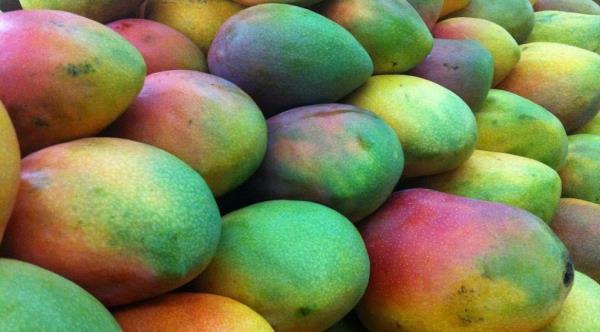Do you know how to identify if the mango is ready for harvest?
Peru
Thursday 22 February 2024
VU
A mango with pronounced shoulders or heart shape, with a layer of white wax on the skin (known as pruina) and a veneer (red colour) representing 15-30% of the total surface of the fruit, is ready to be harvested. This is a simple assessment method that all producers can use (photo: sqm.com).
Before starting the mango harvest, it is crucial to carry out a thorough evaluation of the field to determine the quantity and quality of the fruit that the producer will be able to offer to buyers or export companies.
The Servicio para el Desarrollo Integral Rural (Sedir), an institution that provides technical support to small producers, stresses that one of the first criteria to identify the different qualities of mangoes and determine their maturity for harvesting is their physical shape. A mango with pronounced shoulders or heart shape, with a layer of white wax on the skin (known as pruina) and a veneer (red colour) representing 15-30% of the total surface of the fruit, is ready to be harvested. This is a simple assessment method that all producers can use.
Ripeness levels
Levels 1, 1.5, 2 and 3 are classified, which are related to the colour of the flesh and require the use of a knife to cut the fruit. Grade 1 corresponds to a completely white flesh, grade 1.5 indicates that the flesh is starting to turn yellow, grade 2 is reached when most of the flesh is yellow, and grade 3 represents an orange-coloured fruit, ready for immediate consumption.
Fruit in grade 1 will need at least 3 additional weeks to reach its best development, while the passage from grade 1.5 to grade 2 requires 10 to 15 days. In short, it is essential for the grower to wait the necessary time to obtain fruit of superior quality and thus secure a better price. Moreover, it is possible to harvest up to 2 crops in the same field, depending on the development and ripening of the fruit.
fuente: agraria.pe





